The Many Uphill Battles of Indie Fighting Game Development
This post was original written and posted to my website in August 2021. Despite this, I feel these are still relevant; I also added an additional section, Uphill Battle #6.
So you want to make an indie fighting game? Well, first off, good luck! Indie games are already a tough, competitive market to break into, and the fighting game genre is not the easiest to target. I'm the last person to want to discourage you though. I'm making a fighting game with merfolk in it almost entirely by myself. That being said, I wanted to write about what I see as difficulties and uphill battles that I and others are most likely going to face when creating -- but more importantly, releasing -- indie games in this genre as well as some things they could do to help. Note, these thoughts are my opinion, so take them with a grain of Pink Himalayan salt.
 | |
| I'll upgrade my opinion from normal salt to this. Why not? |
Uphill Battle 1: Big & Old Competition
I mentioned competition earlier, and one of the most difficult parts of indie fighting game competition is, regardless of sub-genre, you are fighting against giants. You have old intellectual properties, some of which are almost (or are now) old enough to run for president. These teams have better development and marketing resources and brand recognition than most small indie teams.
 | |
| Me trying to answer the previously mentioned question. |
Uphill Battle 2: Intellectual Property & Brand Recognition
This is just a theory, but I feel there are a lot of fighting games out there that would not be NEARLY as popular as they are or wouldn’t have gotten off the ground as quickly as they did if it weren't for their use of existing intellectual property (IP) and/or brand recognition. Maybe Super Smash Bros. would be popular if it weren't filled with various Nintendo and other popular game IPs, but I just don't think it would be. Dragonball FighterZ is another example of a game that initially sold very well despite not having rollback netcode -- something else I'll dive into -- but probably wouldn't have gotten a second glance if it were an entirely original IP made from an unknown indie developer.
I theorize that fighting games play into a sort of fun what-if situation. What if these two characters fought? What would happen? What could happen? And then to be a part of that outcome I think is gratifying. When you have an original IP, that connection isn't there immediately, and it's very difficult to build since the fighting game gameplay is not the best vehicle for rich narrative delivery. Your opponents and their decisions create more interesting narratives than the game itself at times.
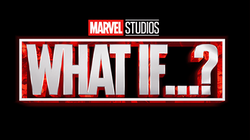
Are fighting games the precursor to Marvel's What If...? No? Not even close? Okay.
Now, this doesn't mean you can't make a fighting game with an original IP. Skullgirls, for example, is a game with a relatively original (at least to my knowledge) IP that has done very well, but at the same time, I believe it used the brand recognition of one of its developers and their place in the fighting game community (fgc) to help get some initial footing. So, again, if you are developing an indie fighter, but you aren't super well known or using an existing IP, it'll be an uphill battle to get noticed, but it's not impossible. I think the important thing to do is to be patient. If the work you put out is strong, it'll eventually get noticed and each new piece will help your own brand grow. Brands don't spawn overnight -- unless you have tons of marketing dollars, which takes me into my next uphill battle.
Uphill Battle 3: Marketing & PR
Marketing is sort of a challenging concept for indie game development as a whole. Many of us wish "if you build it, they will come," rang true and that is all we had to do was make and release a good game, but sadly that is not the case. You have to market your game if you want eyes on it. Now marketing is a broad term. Your game's social media presence is a part of it, sure, but you also have to find streamers to play and show the game off, maybe build a discord community or even purchase ads. Some developers use Kickstarters as a form of marketing, so that even if they don't make their goal, someone, even a potential publisher, will see it.
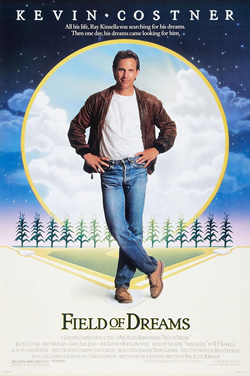
Do people even know about this movie anymore or get that reference?
The one marketing challenge for indie fighting games is that, without a lot of marketing dollars, we can't do what some of the bigger studios can. For example, there isn't going to be a Mattrified Fighters League with a $1,000,000 prize pool at the end of the season. To a degree, tournaments such as these ARE marketing. They get streamed and advertised and they create new players who aspire to be champions (and spend money on the game to do so.)

This isn't happening; solo development is hard enough!
This being said, tournaments and pro players, I think, are a double-edged sword that contribute to fighting games' ever-existent PR problem of being (believed to be) too hard. It doesn't matter how many well-done video essays try to debunk this; this is just something most people believe unfortunately. When Mortal Kombat 11 was coming out; despite a former coworker being a fan of the franchise, he probably wasn't going to bother with the new game. "Eh, I'll just get crushed online, so what's the point?" Could they have gotten the game and researched and played a ton so this isn't the case? Sure, but knowing him, this wasn't his first priority or even in their top ten. Though pro and more serious players I think inspire some to get better, I think they can also push people away. You have many going "I want to be like that one day," and plenty of others going, "Eh, I'll never get that good, so why bother? I'll save my money and play something less frustrating," and not feeling like casual enjoyment of the game is possible.
Going back to my other point, the question of "Why should I play your game?" is particularly hard to answer for pro players, players that can inspire and help market a game. In reality, many don't have a huge incentive to play indie titles. Why should SonicFox or Justin Wong or Kizzie Kay play MerFight or Battle High? They can't earn money from playing it in a tournament. Maybe they can make some ad revenue from streaming it for a bit or making a monetized YouTube video, but even this can distract them from their main game and work against them.
This all being said, marketing is difficult for indie games as a whole, but even more challenging due to fighting game's unfortunate PR problem as well as the fact that they are literally a job for some of its most influential players.
Uphill Battle 4: High Expectations
Another challenge with making an indie game in a well-known but rather niche genre is that its audience, especially those well-versed in it, can be very particular. This is a problem I know that was experienced when former coworkers were working on a side-scrolling shooter game, that fans of that genre didn't like some of their choices because they strayed too far from what was usually expected, and fighting games are similar.
I think when making an indie fighter, it's important to be different and try new things, but you have to be careful that you aren't doing so much differently that you are putting off fans of the genre unless your goal IS to create a paradigm shift or something entirely new, which comes with its own risks.
At the same time, there are a lot of features players will want in an indie game. If only you could keep your game as simple as some old SNES fighters with nothing but arcade and versus modes. Rollback netcode is a huge one for example. I think it's one of the most crucial, made even more so by the pandemic and recent struggles of offline events. Being able to play others in a smooth online experience is important but also very difficult to do well, especially for a small team. Training mode features, though useful for debugging purposes, can quickly become overwhelming, time-consuming UI and UX nightmares.
Then, not only do you have to appease more veteran players, you have to try and attract more casual players with interesting single player, and there's accessibility too. Accessibility is a tricky subject. For one, it's gotten a bit conflated and broad. It can mean anything from being color blind friendly to captions to extensive audio design for visually impaired players to having different languages to the diversity and representation in your cast. All of which are great things, but for small teams with limited budgets, hitting all of these facets is very difficult.
I think where accessibility is debated the most in fighting games though comes down to simplification. I like to call it pick-up-and-playability, that, without prior knowledge of the genre, can someone still pick up your game and be semi-successful. I think this concept birthed games like Fantasy Strike or even Street Fighter 6's Modern Input scheme that try to move the focus away from complex inputs to other areas. The balance though is that if you go too far in this direction, you run the risk of annoying your more veteran players, whose negativity may bleed into your casual audience, even some of which may like your changes in accessibility.
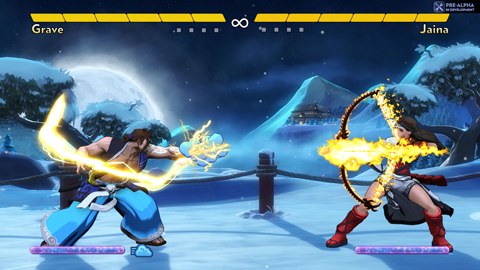
Fantasy Strike isn't for everyone, but I applaud the developers' efforts.
Overall, I think it's important to innovate. That's one of the beauties of indie game development; you can be brave and try new things. However, if you are making a game in a predefined and strict genre such as a fighter, that freedom becomes a bit constricted. Though it's great to try new things, if you do too many, you run the risk of alienating fans of the genre.
Uphill Battle 5: Nostalgic Art Style
This is related to high expectations but a little different. I think games, like books, are often initially judged by their covers, or in this case, first few screenshots or trailers. This being said, I simply think a 2D game may initially get more attention than a 2.5D game. Good 2D animation is easier to read and timeless. I feel it’s why we still talk about the visuals of Street Fighter 2 and 3, because the pixel art was groundbreaking and very strong for both respective time periods and still looks good by today’s standards. On the other hand, many criticize Street Fighter 4 and 5 (and I feel we'll be saying the same about 6 a decade from now) for ugly or outdated 3D graphics and animation that lacks the same principles that strong 2D animation has. I think there’s also a nostalgia associated with 2D and a difficulty that some in the fighting game audience respect when a developer decides to go 2D over 3D. Unfortunately, not all teams are equipped to do a 2D game. The amount of work required for a 2D fighting game is sometimes just not viable. If it were, many series would probably still be in 2D. Because of the nostalgia for this art style, I think some 2.5D or 3D fighters struggle to garner the same attention at first, and this can be a demotivating, uphill battle.
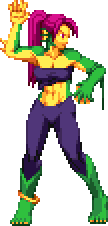
I had to really fight the urge to make MerFight a 2D game after getting this Gigi sprite work done by P0K3TT0.
Uphill Battle 6: Where Are The Players?
I recently saw someone post and ask on social media -- I'm paraphrasing -- "Why do people only play popular fighting games?" The replies were sort of a obvious revelation moment. A lot of the answers simply came down to: Because I can find matches in them. This is sort of related to Uphill Battle 1 in a way, but I think it is significant enough to be it's own.
It's a bit of a difficult chicken and egg problem. People think it's dead cause no one is playing; no one is playing because people think it's dead. Meanwhile, everyone is just playing the game they know has players, even if -- in rare cases -- they don't like it that much. As an indie, you can only do so much to try and get that big initial push for players and hope that your concurrent users stay strong enough so that people aren't waiting to find a quick match or ranked opponent match before having to resort to asking for a match in discord.
 |
| Is the game dead cause nobody's playing or is nobody playing cause it's dead? |
It's one aspect of indie fighting that makes them unique from other single-player indie games, that they almost require
an audience at the start. If there is no one online
to play your fighting game, than the online mode is almost useless. It feels like one reason why so many popular indie games are single player. Not only do they not have to do all the headache-inducing work that comes with online multiplayer, but they don't have to care about how many players are concurrently playing. If 1,000 people are playing or 1 person, they are all still have isolated experiences that don't require interaction with other, concurrent players. This is one struggle that indie fighting games
have to deal with.
Because of this, I almost feel that indies should not solely focus on online multiplayer. Yes, your online experience should be good and competent with rollback, working lobbies, and more, but I think I would focus more on things that make your game standout from what's out there more. Ask, "What can my game do that most others can't?" For example, maybe a unique single player experience will help your game. It'll certainly help give players something to do if/when there aren't a lot of players online, and it will help give your IP more life, help players learn more about your characters, world, etc. Maybe you have a variety of minigame modes so the basic mode doesn't get immediately stale. This is such a tough subject because to do this, you need extra work, time, funds, etc., but I think it's a recent revelation that has definitely made the idea of indie fighting game development more challenging and less appealing.
Now What?
Again, as stated earlier, this isn’t meant to discourage anyone from making an indie fighting game. I more or less wanted to help establish what battles you may be facing as you go along and try to get your game noticed. At the same time, I definitely don’t want to be like “You need to make a 2D game in Unreal with rollback netcode,” because that’s not true, well maybe that last part is. I think there are definitely some things that will help with getting exposure, which is important, but so is actually finishing your game.
Figure Out Your Return on Investment
This first concept, Return on Investment (ROI), is important for any indie game venture really. Before starting your game, figure out, what is your goal or what are you hoping to get as a return on your investment. Game development, whether you are a hobbyist or professional, IS an investment, if not of your money, your time, so it's important to understand what you want to get out of this. Do you just want to break even financially? Do you want your game to be a major game in future fighting game tournaments? Do you just want to create a portfolio piece that'll hopefully launch you a dream job in the industry. Regardless of your goal, it's important to really look into that and understand it to a degree. And it's fine to dream big! That's great! But also keep yourself grounded, and more importantly, understand why your big dream is difficult and what it might take to achieve it. You are going up against big competition but you don’t have to have the same goals as those big competitors.
Figure Out How Your Game is Different
I think being able to answer the question I struggled with, the “Why play your game over something more popular,” is an important question to be able to answer. It doesn’t need to be a perfect answer, and your first answer doesn’t need to be your final answer, but having an idea I think will help. Answering that question is important, especially when that answer can help guide your game’s design as you continue to work on it.
Respect Marketing and Branding
If you can’t afford hundreds of thousands in marketing, at least understand that everything you do for your game that is public-facing is some level of marketing. Take the time to make good screenshots, write good descriptions on the marketplaces you release your game, learn how to make a good trailer or find someone who can, etc. Be clear that something is prototype art; maybe if it is too prototype-looking, wait to show that off.
Focus On What You Enjoy
I imagine if you are working on a fighting game already, you at least enjoy them to some degree. If you hate them, I would implore you to maybe try a different genre, one you actually enjoy playing. You don’t have to be a professional, major-tournament-winning player who has been playing the genre obsessively for years either, but you should at least have some appreciation for their design and gameplay.
Additionally, game development has a LOT of tasks involved from visual art, audio, programming, etc. Focus on what your team is good at and what they enjoy doing. If there is something you need but your team isn’t equipped for or excited to learn, then find some funds and hire someone who can.
Game development is a bit of a journey; that journey is just as important as the final product. If the journey is making you miserable, you have to solve that problem or you’ll burn yourself out before reaching the end of that journey quickly.

This is also Journey...I'm sorry...
A Checklist
So besides the previously mentioned, here are some smaller things I think you can try and do to help maximize the people to at least try your game. This isn’t a fail-safe list; some items on it may not even be viable. So, even though this is a checklist, don’t stress checking off every item.
Visual
- Nice logo: If you can’t make a nice logo yourself, maybe try a logo creation services such as https://www.tailorbrands.com/, at least to get a start.
- Hero art: If you have an artist or can hire one to create a stunning art piece for your game, this will help with branding
- Screenshots: Create nice screenshots for your game. If you can hide the UI, do that for some. Also try not to have the mouse cursor or “development build” text visible.
- Trailer: An obvious one but also a time consuming one. Recording footage without background music but with SFX is important as often requested by game trailer editors
- Website: Simple, fast info. Brief rundown of your characters, etc. If you add an informative wiki with frame data, that’s a plus
- Good Copy for Storefronts
- Regardless of what platform your game is on, making sure they have nice looking pages is important
Technical
- Determinism: If you plan on doing rollback netcode, making sure your game is deterministic is very important. This most likely includes some level of a fixed point library to prevent floating point errors.
- Netcode: If you plan on having online, try to do rollback and do it early. If you can get it into your prototype phase early, good
- Web & Multi Platform: This is a tricky one and doesn’t apply to all games, but what are you targeting? Can you target PC and mobile? Can you target the Web through WebGL or HTML5? Do you plan on aiming for console? The more platforms you can target, even if there are changes on some (like the web version just being a demo) the more people you can reach
- Button Config and Compatibility: Having the ability to configure controls is important as well as making sure that your game works with a wide variety of controllers and fightsticks.
- Training Mode: The more options you can integrate, the better. A lot of training mode tools are also good debugging tools, so though they are also for the player, they can also help you
- Tutorialization
- Note, this doesn’t have to be technical or even in game; it can be on the website or game page or a video but something is better than just throwing the players into the game with no information
- File Size and Demos: If you can make a small version of your game that may help. Players may be more inclined to download a small 100 MB game opposed to a 1 GB game, especially if they are just trying it out.
Community
- Contact: Have a way for players to contact you. A discord is nice but an email works fine as well. Just make sure you have the time and energy to manage said communication.
- If you have the time to manage one, make a discord. It’s useful for getting players to find one another if your game doesn’t have matchmaking capabilities implemented yet. Just make sure you put in some anti-bot protection such as zira as well as rules.
- Info Heavy Website such as a Wiki: A bit more difficult, but creating a website with frame data and more specific attacking information may be useful, both for you as the developer and for more info hungry fans. Just make sure said data is accurate.
This is a rather long list, and I can’t guarantee doing all of these early in development will get more people initially interested in your game. I do, however, think they are all things that will eventually need to be touched upon to some degree to help maximize the success of your game, whatever you’ve defined that to be.
Looking At MerFight
Since I am currently working on a game, I think it’s important to look at my own work and see what things I have done well and what I could have done better and could be doing better in regards to these uphill battles.
In terms of why should someone play MerFight over another game, I’m still not great at answering this question. I can point out the sea-life-inspired cast as something different or my attempt at creating lenient inputs as a form of accessibility, but overall, I can’t give a super strong reason as to why someone should play my game versus something more popular. I feel my game is more for people who are simply looking for something different and quirky, and I hope I can deliver on having a unique narrative. Because of this, I’ve tried to choose a safe ROI, to mostly break even on what I’m spending on this game, to treat MerFight more as a game to grow my own personal brand than something that will be an overnight success and allow me to retire or even go full time indie.
Additionally, though I know making a 2.5D game is an uphill battle,I chose this art style because it’s what I enjoy working on and what I’m comfortable with. Could hiring pixel artists and making MerFight sprite-based help it be more popular? Maybe, but I wouldn’t enjoy doing that and it would increase the cost, risk, development time, and my desired ROI, so it’s just not a viable option for me.
I do think one good thing has been to put in rollback netcode from the start. Though it’s not GGPO, it’s been really useful to see people play the game online. This has also helped build a small community which has given good, vital feedback. Also building my game in a deterministic fashion has taught me a lot about development as a whole.
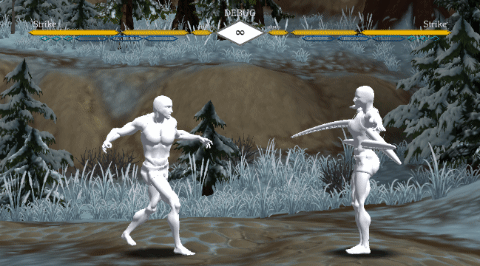
MerFight has come a long way, but I know it still has further to go.
Another misstep of mine is that I got very excited to share the prototype early, when the art wasn’t great and I never took the time to write clean, good storefront descriptions. I essentially didn’t respect the marketing. I can still -- and will -- do this by rewriting and redesigning my itch.io and GameJolt and eventual Steam pages, but these take time and I want to do them properly. Additionally, I sort of focused more on making a horizontal slice -- such as getting all 12 of my characters done -- instead of making a vertical slice -- getting a smaller cast done but very polished -- so when showing off the game early, it may not have been as visually appealing as it could have been. Additionally, the file size is now rather large, about 1 GB -- though it was closer to 2 GB at one time! (2 years later, it's not 3 gigs thanks to a bunch of new costumes.) To use the book analogy, my novel was nearly finished but the cover was hideous. I think the idea of a strong vertical slice is the only thing I would really do differently if starting over. I was close to having a strong vertical slice, but then COVID happened, I focused on what I enjoyed working on the most -- character design and animation -- as a sort of stress relief or distraction from the situation.
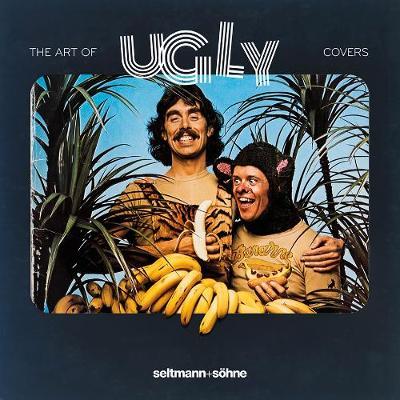
Okay, I'll admit, I sort of want to see what this is about.
Finally, regarding uphill battle 6, I added a ranked mode to MerFight. Why? I don't think I've broken 20 online concurrent users. Admittedly, I'm not recording or studying a ton of analytics to see where players are at with it, but I'd be very surprised if anyone is in shark tier (yes, I did my tiers based on different fish.) Not that I spent a LOT of time on my ranked mode functionality, but I feel in retrospect, maybe that time would have been better spent starting my single player content sooner or adding an additional mode to the game, and then, IF I'm successful and my player base is large enough to warrant it, then I can add a ranked mode.
Conclusion
At the end of the day, there are no guarantees in game development. You can have great answers for all of these uphill battles and still fail -- of course that'll depend on what failure means in regards to your ROI. That's probably one of the toughest lessons with indie game development -- with any creative endeavor really. All I've done with this post is try to establish some of the challenges I think you’ll most likely face when developing your indie fighting game, especially when trying to get your game out there into players' hands. I think by understanding these uphill battles, you can create your own strategies on how to overcome or simply accept them and their consequences. Anyway, good luck! I look forward to trying your games.
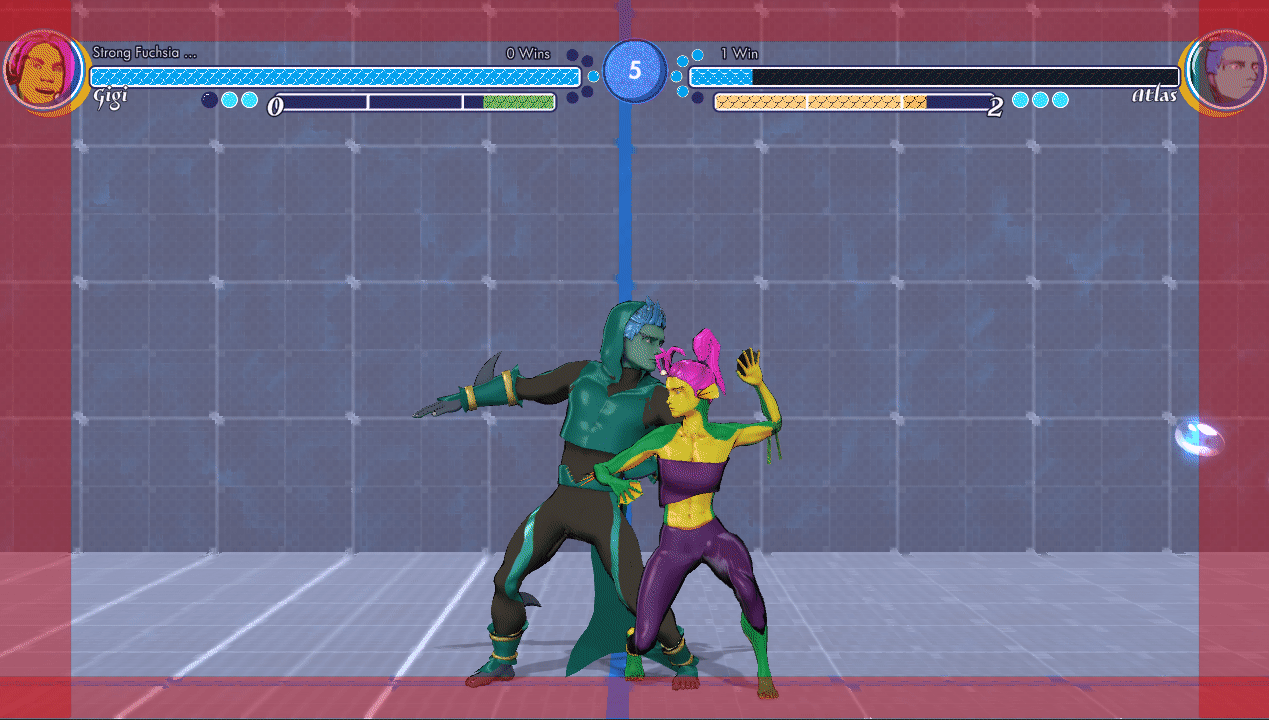
Thanks for reading!

Comments
Post a Comment